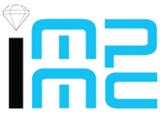

Our research activity covers fundamental investigations and development of new methodological tools applied to protein sequences and structures. It lies at the interface between chemical physics (protein compactness and micellar properties) and biology.
The main focus of our group is the analysis and the prediction of protein folds as well as that of protein sequence-structure relationships. These aims are investigated through various approaches, in particular using a bidimensional approach called Hydrophobic Cluster Analysis (HCA, first curvature of sequence space), which gives information about hydrophobic local compactness associated with the internal faces of regular secondary structures. This method, which gives rise to a lexical treatment of protein sequences, allows the comparison of protein sequences at low level of sequence identity (detection of remote relationships, identification of new domain families, ...). Recent investigations focus on the development of HCA-based tools to apply this methodology at wide scale and to analyse protein "textures". HCA was recently extended to loop analysis through a Generalized Cluster Anlaysis (GCA). GCA, including hydrophobic and loop cluster analysis, covers the analysis of the main features of protein sequences.
A second curvature of the space (Hydrophobic Cluster Folding, HCF) is now also under progress in order to identify the hydrophobic global compactness underlying protein folds. Several fundamental investigations (Voronoï tesselation, prediction of 3D vicinities on the basis of multiple sequence alignments and HCA hydrophobic cluster topology, ...) are performed in order to provide constraints to the HCF procedure. Tools aiming at the optimal prediction of the assembly of secondary structures are also developed (RUSSIA procedure). On another hand, intrinsic taxonomy of loops and "tightened end fragments" (TEFs) are investigated.
Guidelines to HCA, DrawHCA and DrawLCA
Generalized Cluster Analysis :
structural features of frequent
hydrophobic clusters and
loop clusters
Cluster code converter
Voronoï tesselation with Voro3D for your Windows PC.